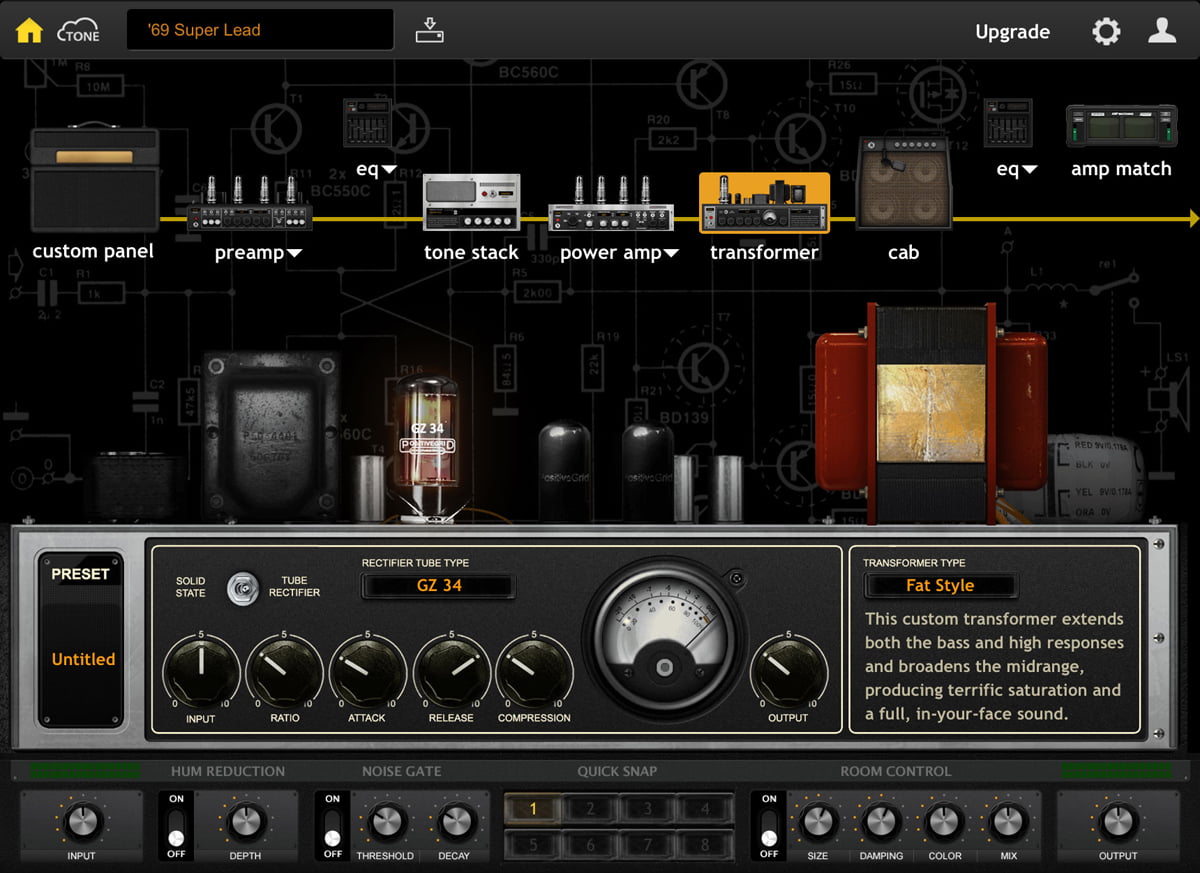

Here’s how it works:Ī recording engineer uses a real cabinet, speaker, and microphone. Real cabinets with real microphones are used to create this, so the sounds are freakishly close. Lastly, virtual cabinets are based off something called impulse response (IR). Have they done it? More on that in a bit. What I’ve just described is what virtual amps have been painstakingly trying to replicate for years and years. Light picking will provide a cleaner tone, while smashing that open G chord will make your amp scream! When it’s your power amp providing this, your picking intensity can dramatically change the amount of gain you hear. When your power amp is being hit with a ton of signal (diming your output volume or hitting it with an overdrive pedal), it “breaks up” leading to one of the most beautiful things on this planet: tube distortion. The power amp tubes amplify that signal, and also do something very interesting. Whether or not you like this is subjective. There tends to be richer harmonics with tube preamps. The preamp tubes provide tube (obviously) gain and more color. Tubes have a tonal and harmonic impact on your amp that is really quite difficult to replicate.

Tube amps have additional hardware called.wait for it.tubes (or valves if you’re not from North America). These add tone (frequencies available, in addition the cutting or boosting of the frequencies), and can vary by configuration and country of origin. Especially tube amps.Īll physical amps have physical components, like resistors, capacitors, transformers, etc. And this is where it gets really difficult to emulate a real amp. The virtual power amps are designed to react the same way a physical amp does. The preamps will have the same tone controls with the same frequency ranges, similar gain structures and stages, and of course all of the reactions the real preamps do. The amps are created using algorithms to recreate the technical and aural attributes that make the amps sound the way they do.
#Bias guitar amp simulator free
If you see a mic labeled “MS75”, it’s a royalty free SM57. You’ll also get your effect pedals like reverb, delay, fuzz, distortion, overdrive, etc etc.Įverything is based off (or influenced by) existing gear. In a basic sense, a virtual amp is an emulation based off real preamps, power amps, speakers, cabinets, and microphone combinations. You plug your guitar or bass into your interface, and you’re playing on those rigs.
#Bias guitar amp simulator software
Now imagine firing up your computer, opening your DAW (Logic, ProTools, Reaper, etc) and having all of that right there through software like Positive Grid and Guitar Rig. They have a plethora of amps, cabs, combo amps, rack gear, an expansive microphone closet, and a well-tuned room. Think about going to the best studio you can imagine. Can they really replace a cranked tube amp? This was software only, so the costs dropped dramatically.īut how good do they actually sound. You didn’t have to spend $1500+ on a modeling amp. Virtual amps like Positive Grid's Bias FX and Bias Amp, and Guitar Rig by Native Instruments started to gain traction. But you no longer needed a physical unit. The idea is the same as the modeling amps. As computers grew more capable, manufacturers ditched the outboard units and made virtual amps. You had very expensive units like the Fractal Audio Axe FX and the Kemper Amps Profiler dominating stages and studios. The Development of Amp ModelingĪmp modeling began to improve over time as technology does. I didn’t have to pretend to turn my volume down on my amp when the sound engineer told me I was too loud. I could throw a pedal and a guitar in my trunk, and just drive off to the gig. It wasn’t until I got the Line 6 POD XT Live and the HD500 that I started to use the amp modelers for what they were intended for: replacing amps. Sure, it was fun to use at home to practice. Outside of that, I couldn’t see a practical purpose.

I could play some blues licks, dial in a jangly clean tone for my softer chord progressions, and scoop the heck out of the mids on the metal setting for my Metallica jams.

At the time I thought it was a lot of fun for practicing since it had a variety of tones. The first modeling amp I can remember using was the Line 6 POD (the original kidney bean).


 0 kommentar(er)
0 kommentar(er)
